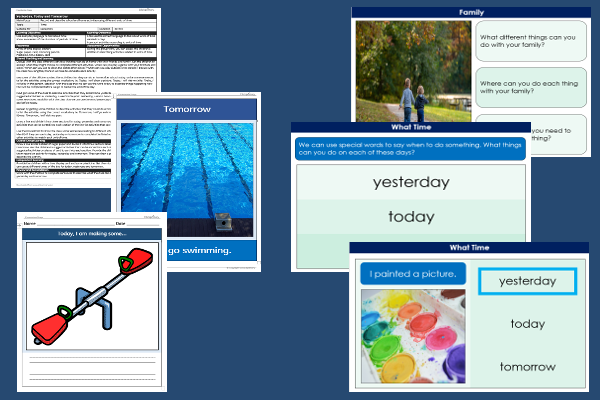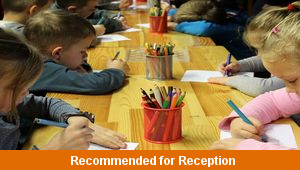Lesson Two – Yesterday, Today and Tomorrow

This numeracy teaching pack for the Foundation Stage gets the children to identify and describe a range of different school and home events and experiences using matching units of time for special vocabulary words.
The class can list and sort actions to match vocabulary words that can be used to describe the different time periods of yesterday, today and tomorrow.
Download this teaching pack including a lesson plan, classroom activities and an interactive presentation to identify and describe a range of different school and home events and experiences using matching units of time for special vocabulary words
Activities in this teaching pack include display posters to select vocabulary words to describe different events and experiences using units of time for today, yesterday and tomorrow and a template to select and record what can happen in school or at home to match vocabulary words for different times.
The interactive presentation gets the children to explore and describe school and home events and experiences to match different units of time for today, yesterday and tomorrow.
This lesson is part of a numeracy scheme of work to get the children to select and use special vocabulary words to describe different periods of time including days of the week and months of the year to match family events and experiences. There are teaching activities for shared learning, differentiated worksheets to support independent learning and interactive presentations to introduce concepts and key skills.
-

Halving Things
Explain and model how to find and record the halves of some of the different objects that can be used at home and in school
-

School Friends
Identify and learn classroom routines and organisation by exploring and describing information and likes and dislikes for each of their classmates
-

Classroom
Identify the location and function of different objects used in the classroom and explore how to formulate rules to manage the classroom safely
-

Shape Patterns
Identify, describe and compare the sequences of geometric shapes that have been used to create a range of different patterns
